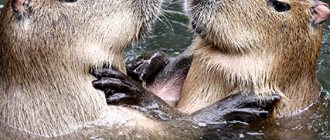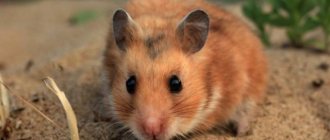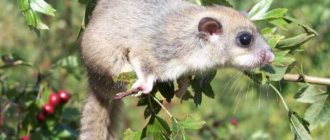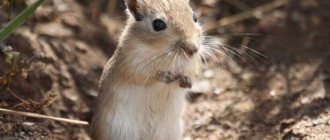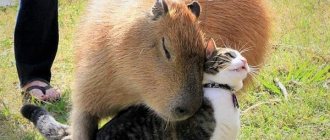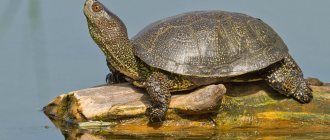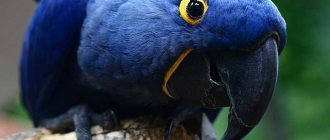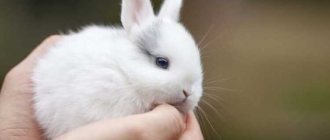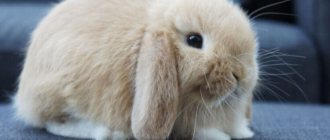The most numerous order of mammals are rodents. A total of 2,277 species have been described. They can be found almost everywhere, anywhere on our planet, with the exception of Antarctica and some islands.
Typically, all rodents are small in size, from 5 to 130 cm, but on average do not exceed 50 cm. Many of them have a particularly long tail, which is significantly larger than their body size, but some have it completely absent, such as sea pigs.
The smallest rodent is only 3 cm in length (plus 2 cm for the tail), it weighs only 7 g. Some rodents are impressive in their size. Thus, the average weight of a capybara is 65 kg, and individual specimens weigh up to 91 kg.
The largest are rodents, which have long since become extinct. The remains of giant representatives of this group were found, the largest of which weighed from 1 to 1.5 tons, it is possible that it reached a size of 2.5 tons. Nowadays it is impossible to meet such giants.
But still, the largest rodents in the world amaze with their size, despite the fact that in our society there has long been a stereotype that if it is a rodent, then it is a tiny animal that fits in the palm of your hand.
Capybara
The capybara is the world's largest rodent, which lives near rivers and lakes in South and Central America. This herbivorous semi-aquatic animal is recognized as the only representative of the capybara suborder. The weight of an adult reaches 65 kilograms, and the body length is 110-130 cm. Females are much larger than males and weigh up to 125 kg during the period of bearing offspring.
Despite such impressive size, capybaras are kind and friendly. They feed on plant foods, including algae and root vegetables. Animals are not afraid of people and gladly take food from their hands, but they prefer to stay away from settlements.
Protect your property from rodents of different shapes and sizes
While you're unlikely to encounter the world's largest rat or mouse in any English-speaking country, small pests can still find their way onto your property. Whether it's rats or mice invading your home or moles and gophers burrowing under your lawn, rodents can carry viruses and cause many other problems.
As soon as you see signs of presence, use Victor® traps and repellents. The Victor® catalog contains a wide selection of products that will quickly and efficiently solve all problems.
Beaver
There are two varieties of beavers - Canadian and Mongolian. The second type of rodent is considered the largest. The length of a mature male reaches 1.5 meters, and body weight ranges from 30-35 kilograms. Beavers are extremely hardworking creatures, they are constantly engaged in building houses and dams, and spend a lot of time searching for food and training their offspring. The peculiarity of animals is their strong teeth and powerful jaws. They easily chew through the hard bark of trees and are capable of felling an oak or tall spruce in a short time.
Beavers' eyelids are transparent, which allows them to see clearly under water. The tail of animals is multifunctional. It regulates body temperature, helps change direction while swimming and express emotions.
Social structure
They are not loners at all, only a small percentage of capybaras live alone. Mostly they live in groups of up to one hundred individuals, although smaller groups of 10-20 individuals are more common. Each family is headed by a male. Besides him, there are other “men” in the pack, but their role is secondary. The leader can kick out overly aggressive competitors from his group.
Male capybaras have an olfactory gland on their nose; it secretes a secretion with which animals mark territory. However, this does not always save his flock from attacks by outside males. Capybaras communicate with each other by squealing, chirping or barking sounds. They serve to provide warning, threat, and other messages within a species.
The secretion of males also performs a more romantic function, attracting females during the mating season. Mating occurs exclusively in water. The female gives birth to up to 8 cubs, each of which weighs 1.5 kilograms. Newborn capybaras immediately resemble their parents, and become sexually mature after 16-18 months.
Mara
The animal lives on the rocky plateaus of Argentina and Patagonia and looks slightly like a kangaroo. Mara is a distant relative of the well-known domestic guinea pig and belongs to the half-ungulate family. An adult rodent weighs about 20 kilograms, and its body length often reaches 50 centimeters.
In Patagonia, locals call the maru the lowland hare, since the rodent's hind legs are much longer than its front ones and help it jump long distances. In addition, the habits of the mara are similar to those of a hare. When an animal runs away from a predator, it jumps in a zigzag pattern, straining all 4 legs at the same time.
Top 10: Terrifyingly Huge Rodents
The mere mention of rodents fills us with fear. For thousands of years they have been our uninvited guests, crawling in the shadows, feasting in trash cans and spreading disease. Why do these creatures evoke such strong emotions in us? Maybe this is because they are so alien to us? Because rodents represent a dark reflection of humanity? Or is it because they are so small that they can hide anywhere? However, in reality this is not always the case. Some species of rodents grow to terrifying sizes. Below are several giant rodent species. 10. Nutria
Photo: Norbert Nagel The Louisiana Bayou is under attack. Enemy: Nutria, a 6-pound rodent from South America. With a voracious appetite and feeding on aquatic vegetation, these rodents transform wetlands into open water. Without the bayou to absorb storm surges, floods could wash out southern Louisiana. The family behind Tabasco sauce released nutria into southern swamps in the 1930s, hoping to provide an alternative to the beaver fur trade. However, the Argentine swamp rat's fur lacks the shine of beaver fur, so nutria fur never caught on. Now their population is getting out of control. A culinary event called Nutriafest was started to promote the consumption of this invasive rodent. Nutria meat enthusiasts say it contains more protein than beef and less fat than aqua-farmed catfish. The statistics may be on the nutria's side, but they have a public relations problem. Attempts to change the human perception that nutria are "dock rats on steroids" include rebranding them as "bayou rabbit" or calling them by the French name "ragodin." Some have suggested serving nutria in Louisiana prisons, however, there is a fine line between experimental cuisine and cruel and unusual execution. 9. Laotian Giant Flying Squirrel
Photo: Sci-News/Daosavanh Sanamxay et al Not all of the huge rodents scurry around in the shadows. Some of them prefer to fly by air. With a body length of approximately 108 centimeters, the Laotian giant flying squirrel is not just a large flying squirrel, it is the largest squirrel. Experts spotted the first known specimen in the bushes of a forest game meat market in Laos, and no one knows how many there are. Only 10 other individuals of this species have been found, all from freezers. These flying squirrels don't actually fly - they glide through the air. Membranes of skin that stretch from the ankle to the wrist act more like parachutes than true wings. Their tail acts as a stabilizer, and cartilaginous rods in their wrists help keep them in the right direction. However, these adaptations to life in trees were not enough to give the Laotian giant an advantage, as they are critically endangered. The Laotian giant flying squirrel is the second known species of the genus Biswamoyopterus. Another is the Namdapha flying squirrel, which is known from a single specimen found in 1981 in northeast India. Given the limited number of Biswamoyopterus in existence, no one knows how wide their distribution range is. Other giant flying squirrels, such as the taguan, range from Afghanistan to the islands of Southeast Asia. Like all flying squirrels, the taguan is arboreal and nocturnal. 8. Giant beavers
Monstrous rodents terrorized New York long before the appearance of the sewer rat.
The New York area was once home to giant beavers, the size of bears, whose body length was 213 centimeters and weighed more than 90 kilograms. For comparison, the maximum weight of the largest individuals of modern beavers is 27 kilograms. These prehistoric beasts went extinct 10,000 years ago, along with other Pleistocene megafauna that lived in what is now New York City, such as mammoths and saber-toothed cats. These mega-beavers figure prominently in the mythology of several Northeastern Indian tribes. In the legends of the Pocumtuk tribe of Massachusetts, giant beavers are man-eaters. Given the limitations of studying fossil specimens, we have no idea whether they had webbed feet or a flat tail. However, we were able to find their teeth, the length of which sometimes exceeded 15 centimeters. Did they use these dental daggers to cut down trees? Or were these terrible teeth intended to tear flesh? Modern beavers are not small animals themselves. These aquatic workaholics are the second largest rodent species alive today, second only to the South American capybaras. The insatiable appetite of seventeenth-century fashionistas for waterproof beaver fur caused the near extinction of the European beaver and served as one of the main arguments for exploring Canada. These amazing creatures can fell trees, swim underwater for 15 minutes without breathing, and turn open fields and forests into ponds due to their obsessive need to build dams. Only humans surpass beavers in their ability to change the environment. 7. Swedish Viking Rats A giant gray rat recently became the victim of an industrial-sized trap set in the kitchen of a house in a Swedish suburb. The body length of this creature exceeded 40 centimeters, and it gnawed through monolithic concrete to get into the house. The rat survived the impact of the slammed trap, but was suffocated when it tried to escape with the trap around its neck back to its lair. While there is no evidence that rats in general are becoming larger in size in developed countries, the Viking rat may be a harbinger of a coming trend: mutant monster rats. Reports of mega rodents are coming from all over Ireland, the UK and the US. Experts say gray rats are becoming the size of cats, twice the size they used to be. Ratcatchers recently caught a 61cm specimen from a flat in Dublin. Not only are rats getting larger in size, they are also mutating. These fast-breeding rodents have developed immunity to poison. Ratcatchers currently use Bromadiolone, but claim that it no longer works. A 2009 study at the University of Huddersfield showed that a genetic mutation led to the emergence of “super rats” with resistance to poison. Are new, more toxic cocktails needed? And if so, how long will it be before the rats mutate again? 6. Capybaras
Photo: Karelj The capybara is the largest among modern rodents. Roaming the steamy plains of southern Africa, these semi-aquatic creatures weigh 45 kilograms, putting them in the same weight category as Labrador retrievers. Venezuelans traditionally eat capybaras for Easter. Their meat is a delicacy and is described as a mixture of "anchovy and pork." According to Venezuelan tradition, capybaras can be eaten during Lent because the Catholic Church supposedly encouraged the practice in the 18th century, claiming that it was actually a species of fish. Most diners probably prefer not to know that this huge rodent has the disgusting habit of eating its own feces. Some people have domesticated these rodents. Domestic capybaras spend most of their days in swimming pools. They get along well with cats, dogs and horses, but reports from breeders indicate that they enjoy the teasing of rabbits and are very irritated by tortoises. However, it is worth noting that capybaras can be aggressive. Their teeth are sharp, and their bites are no laughing matter. Once upon a time, rodents much larger than capybaras roamed the territory of what is now Venezuela. In the city of Urumaco, located 400 kilometers west of Caracas, scientists discovered a rodent 10 times the size of a capybara. The species Phoberomys pattersoni was a relative of modern guinea pigs. Eight million years ago, this 700-pound "Pig" roamed the banks of ancient rivers, perhaps in huge herds. Urumaco was home to giants of all kinds, from the largest turtle that ever lived, some of the largest crocodiles in history, to a number of unidentified, monstrously large fish that once lived alongside Svinilla. Experts believe these enormous rodents went extinct because they were too big to hide from predators. Bigger is not always better. 5. Gough Island House Mice Killer rodents have taken over Gough Island. Two million mice run rampant on this lonely outpost in the South Atlantic. These bloodthirsty rodents are half the size of mice found elsewhere. The creatures, not endemic to this habitat, feed their super size on the chicks of Atlantic petrels. Gough Island is a major breeding ground for seabirds, but that won't last long. On the neighboring island of Tristan da Cunha, black rats have already devoured a separate population of petrels. These invasive rodents fear no predators on these remote islands. Gough Island mice are known to attack and eat Tristan albatross chicks, which are 300 times larger than mice. Analysis shows that 1.25 of the 1.6 million petrel chicks born each year on Gough Island are devoured by these mice. The remote South Atlantic islands are not the only islands affected by invasive rodents. On the Farallon Islands, located 45 kilometers from San Francisco's Golden Gate, unpleasant rumors of a rodent infestation have appeared. As an employee of the US Federal Fish and Wildlife Service explained, “There are so many mice there that it seems as if the earth itself is moving. . . While on the island, they crawl on you while you sleep in your bed." Introduced accidentally by fur traders, the Farallon Islands mice boast the highest population density of any rodent not endemic to the island in the entire world. Everyone agrees that something needs to be done to control mice and stop them predating the chicks of the critically endangered Ashy Storm Petrel, but not everyone agrees on the method. The plan to carpet bomb the island with pesticides from helicopters was met with disapproval. Many are concerned about the ethics of using the poison and the impact it will have on the ash storm petrels and jackrabbit owls that prey on the island's mice. In addition, the poison should kill every single mouse. One pregnant female can repopulate the island. There is precedent for eradicating island rodents. Recently, Rat Island, part of the Aleutian chain, was renamed "Hawadax Island" after biologists successfully eradicated the island's population of the invasive gray rat using poison. Not surprisingly, Alaska now has fewer bleeding hearts than the San Francisco Bay Area. 4. Josephoartigasia
In 1981, scientists excavating in the Montevideo region of Uruguay discovered the remains of a 53-centimeter skull. It was larger than the skull of a cow, but a pair of incisors were clearly visible on it. The bones belonged to Josephoartigasia, the largest rodent that ever existed. This prehistoric beast dominated the forests of South America four million years ago. Analysis of the skull suggested that the creature was the size of a bull. The length of his body reached 244 centimeters, and his weight exceeded a ton. This monster resembled a giant capybara and was more closely related to guinea pigs and porcupines than to mice and rats. The teeth of Josephoartigasia indicated that their diet consisted of aquatic vegetation and fruits, but this does not mean that they were passive. These mega-rodents lived in a hostile world of saber-toothed cats that fed on the meat of marsupials and 3-meter-tall dire birds. Perhaps their teeth were used for defense, or the males used them in competition for mating rights. 3. Bosavi Woolly Rats In 2009, scientists stumbled upon a lost world: the Bosavi crater. Even the local Kasua tribe, who provided trackers for the exploration team, rarely went inside the crater. The steep-walled Bosavi crater, almost 800 meters high, is an evolutionary island. This volcanic basin in the highlands of Papua New Guinea is home to 40 new-to-science species believed to exist nowhere else on Earth: 16 amphibians, one gecko, three fish, many spiders and arachnids, marsupials, and the largest true rat ever known. The rat has been tentatively named the Bosavi Woolly Rat because it is a new species to science and does not yet have an official name. The creature, with a body length of 81 centimeters, with lush, silvery fur, was incredibly meek, indicating a complete lack of contact with people. While the Bosavi woolly rat is the largest living rat, much larger individuals roamed the jungles of Southeast Asia as recently as about 1,000 years ago. Archaeologists from East Timor have discovered the bones of a rat three times the size of the Bosavi woolly rat, and the remains found belong to a creature dating back to this period. These extinct giants weighed up to 6 kilograms. Eastern Indonesia is a hotspot for rodent evolution. The expedition that discovered the giant rat also discovered the remains of 13 species of rodents, 11 of which were unknown to science. Given the dense forest and difficult terrain of East Timor, it is possible that new, even larger specimens are waiting to be discovered. No one knows exactly what discoveries await us. 2. Giant Hutia More than 100,000 years ago, the Caribbean island of Anguilla was ruled by monsters: rats twice the size of humans. These bear-sized beasts are known as Ambyrhiza, also known as giant hutias, and they were 1000 times larger than a modern rat. These creatures were heavy and slow, indicating that there were no predators in their habitat. Fossils confirm that there were no other large mammals on the island at this time. The island on which the giant huti roamed was much larger than it is today. Due to lower sea levels during the last ice age, Saint-Barthélemy, Saint-Martin, and Anguilla were part of one island known as Greater Anguilla, which had an area of 12 times the area of the current island. When the Ice Age ended and sea levels rose, the giant huti were unable to adapt to their more crowded environment. Their story ended just like the story of the dodo. There are much smaller cousins of the hutiyas that still live in the Caribbean, although most hover around the 2 kilogram mark and are mere echoes of Anguilla's giants. Modern hutias are very common in Guantanamo Bay, where they are known as "banana rats." The "banana" part of their name refers not to their eating preference, but to the size and shape of their feces. 1. South African porcupines
Photo: Kati Fleming Endemic to southern Africa, the South African porcupine is the largest of its spiny cousins. These animals can grow up to 27 kilograms in weight, making them the third largest living rodent. These monsters are second in size only to capybaras and beavers. South African porcupines have more than 30,000 individual quills on their bodies. These 8cm, razor-sharp spines easily detach and grow back, giving them the most fearsome line of defense in the rodent family. Porcupine quills have been used in jewelry and tools for thousands of years, and new uses continue to emerge. For example, experiments have shown that porcupine quills pierce pig flesh with only half the pressure required by a regular syringe needle. In addition, the design of these needles, which seem to have barbs along their entire length, makes them very difficult to remove, which could be useful for holding medical implants in place. Given their truly terrifying weapons, we are incredibly lucky that South African porcupines are not aggressive animals. They spend their time on the ground, feeding on roots, tubers, and other delicacies from the forest floor at night. These peace-loving monsters are among the longest-lived rodents, living up to 20 years in captivity. South African porcupines are monogamous and mate for life, meaning their marriages often last longer than those of humans.
Massoutiera
The largest representative of the comb-toed family and the only rodent on Earth from the genus Massoutiera. The animal's habitat is Mali, Nigeria, the Republic of Chad, Algeria. Masseurs live mainly in mountainous areas and lead a diurnal lifestyle. The male's body length is 24 centimeters, and his weight is 160-170 grams. Females are 14-18% larger.
Since 2015, masseurs have been listed in the Red Book as an endangered species. Rapid declines in rodent populations have been observed in areas where livestock farming flourishes and drought seasons regularly occur. To protect the species from extinction, reserves are being opened in Africa where the massier is kept.
Wild big rats that live in Russia
In Russia, rats can be found almost everywhere. They live in natural conditions and often settle near human habitation. Among them are such species as: black and pasyuk (gray).
Pasyuk often lives in sewers, basements, warehouses, and sheds with animals. They grow up to 25 cm, the tail is about the same length. The weight of this species reaches 400 grams. Rarely, but there are individuals weighing 500 grams.
There are known cases when a gray rat attacked a person. True, she does this mainly for self-defense. They are omnivores and accumulate in large numbers in landfills and garbage dumps. They are carriers of various diseases. Capable of chewing through metal and concrete. They multiply very quickly. At the age of three months they are able to bear offspring. The number of pups in a litter reaches 20.
Chernaya settles mainly in the southern regions of Russia. Prefers dry rooms and attics. But in nature it settles near rivers and lakes. And their favorite habitat is sea ships.
The black rat is smaller in size than the Pasyuk. It is up to 22 cm long, with a tail of 28 cm. And the weight of this species is from 130 to 300 g. The coat color is black, hence the name of the species. It eats grains, fruits, vegetables, worms, insects, bird eggs. There can be up to 15 pups in the litter. The lifespan of these rodents in nature is on average 1 year.
Pacarana
Pacarana is the only representative of the Pacarana family. Rodents inhabit countries such as Colombia, Bolivia, Peru, and Venezuela. Less common in Brazil and Ecuador. Pacaranas prefer to settle deep in tropical rainforests, away from humans. The body length of an adult animal is at least 73 centimeters, and its weight ranges from 11 to 15 kilograms.
In preparation for childbirth, females make cozy nests in deep crevices of the earth or rocks so that their offspring do not fall into the clutches of predators. A newborn pacarana weighs 850-900 grams. Animals feed on vegetation, mainly grass and berries.
Crested porcupine
Another name for the animal is the crested porcupine or typical porcupine. The largest and most famous representative of the Hystricidae family. The creatures live in Europe, India, North Africa, China, Transcaucasia and Iraq. The body length of an adult is over 85 centimeters, and its weight is 25-27 kilograms.
A special feature of porcupines is the long quills that line their backs and serve as a means of defense against natural enemies. In dangerous situations, the animal throws out needles. They dig into the attacker's body and cause severe pain. The most common victims of tufted porcupines are curious dogs, farm animals and children.
Baybak
The baybak or common steppe marmot inhabits almost the entire territory of the Eurasian virgin steppes. He is the largest representative of the squirrel family. The body length of the male reaches 80 centimeters, and the weight is from 10 to 13 kilograms. A distinctive feature of the boibak from other types of marmots is its shortened tail. Its length does not exceed 15 centimeters.
Among these animals, albinos are often found, which are caught and kept as rare pets. Boibaks feed on hay, grain crops, grass and root crops. During periods of famine, they climb into vegetable warehouses and destroy food supplies.
Large pet rats
You can often find some types of rats as pets. With different colors, sizes, habits. Keeping rodents does not require large expenses; they are unpretentious. Both special food from a pet store and human food are suitable as food. Unfortunately, they are not long-lived; they live 2-4 years. Therefore, it is not recommended for overly impressionable people to have such a pet. What are the largest domestic rats?
Breed "standard"
They are the largest and most common among domestic rodents. The pet can grow up to 30 cm in length and reach a weight of 300-500 grams. They are friendly towards humans and do not bite.
They quickly get used to it and can sit on their hands or shoulder for hours. Their cage needs to be cleaned at least once a week. There must be fresh water in the drinking bowl, and there must be grain in the feeder. Cases of their friendship with other pets are not uncommon. They live from 2 to 4 years.
Large brown rats
They are also among the large domestic rodents. They grow up to 20 cm in length and weigh 100-150 grams. They are also omnivorous and unpretentious. They love to be taken out for walks. There is a slight inconvenience in this, because not all people have a positive attitude towards rats, even domestic ones. Another disadvantage is that this species lives only 2 years, sometimes up to three years.
Rats "Dumbo"
They differ from other species in the structure and location of their ears. The Dumbo breed's ears are round and wide, protruding, and positioned lower than those of other species. They reach 18-20 cm in length and can weigh from 250 to 500 grams. The body shape of the animals is similar to a pear. Females of this species are slightly smaller. Rodents are very affectionate and can remember their name. They eat grains, greens, vegetables. The Dumbo breed is also fed boiled and raw chicken, fish, and cottage cheese. Rodents live 2-3 years, but with proper care they can live from 4 to 5 years.
Flanders
The animal was nicknamed the Belgian giant because of its incredible size among the representatives of the rabbit family. An adult rodent grows up to 70 centimeters in length, and particularly well-fed individuals can weigh 24-25 kilograms.
Flanders are bred to obtain skins with thick, beautiful fur, from which sheepskin coats, mittens, hats, and nutritious meat are sewn. Less commonly, this breed is kept as a decorative pet. Belgian giants are famous for their fertility. A person who decides to engage in rabbit breeding by purchasing a pair of flanders will become the owner of a large rabbit farm in 2 years.
Long observations of the behavior of Flanders allowed scientists to conclude that they are very smart and friendly. Rodents easily make contact with people and get along with other pets in the house.
Domestication ability
The capybara is very well tamed by humans and is quickly domesticated. The animal is moderately intelligent, flexible and friendly. They get along well with pets. Capable of learning, very clean. At home, in addition to grass, they eat grain, zucchini, and melon. The pet owner needs to stock up on birch or willow branches so that the animal can grind down its incisors.
To have a capybara at home, you need a large pool; you cannot keep them in a cage, as they are a freedom-loving animal.
Indian giant squirrel
The Indian ratufa is recognized as the most beautiful representative of the squirrel family. This is a huge herbivorous squirrel that lives in trees and is diurnal. Animals of this species live in the forests of Hindustan, most of them near the state of Madhya Pradesh.
The color range of the Indian ratufa consists of three shades, the body length is up to 65 centimeters, and the weight of an adult individual does not exceed 2300 grams. Rodents feed on tree fruits, leaves, small insects and root vegetables.
Soviet chinchilla
The largest breed of domestic rabbits, bred for their fur on private farms in Russia and the CIS countries. It was obtained by crossing American small chinchillas with white giant rabbits. The bred animal is large in size: body length - 70-75 centimeters, weight - 5-6 kilograms, subject to proper feeding and maintenance. A feature of Soviet chinchillas was their high fertility. A female gives birth to up to 15 cubs per year, which gain a weight of 2 kilograms in 60 days.
Nutria
Its other names are swamp beaver or koipu . " Nutria " is translated from Greek as "mouse-beaver". In appearance it resembles a rat of enormous size: the body grows up to 60 cm, the tail is 45 cm, it weighs from 5 to 12 kg. Males are usually larger than females.
She has a huge head with small ears and eyes, and a blunt muzzle. The tail is hairless, it is a kind of rudder that is used when swimming. The fur of this animal is waterproof and brown.
Nutria lives in South America, but it has been able to acclimatize in many countries. It is active at night. Lives in groups of 2-13 individuals.
Speckled gopher
The speckled gopher or prairie dog is the most common rodent in Eastern Europe, the banks of the Danube and Volga. They also inhabit countries such as Belarus and Ukraine. Speckled gophers live in dry meadows, forest belts, plantings and near water bodies. The body length of a mature prairie dog reaches 25 centimeters, and its weight does not exceed 700 grams. The gopher, having left its parent's nest, begins to equip its house. In it he raises offspring, spends the summer and hibernates.
Mutant rats
You can often hear incredible stories about gigantic rodents inhabiting subways and abandoned military facilities. But all this is just a wild fantasy of people who are bored of living without myths. And the yellow press thus attracts readers, increasing the sales of their newspapers and magazines.
Someone, having read it, retells it and exaggerates it to make it look more impressive. In fact, the largest rat in Russia is the Pasyuk. In subway tunnels, at military installations, they are all the same as in everyday life, in full view of people. There may be larger specimens, but this is not the result of mutation, but simply from the “good” life of rodents.

